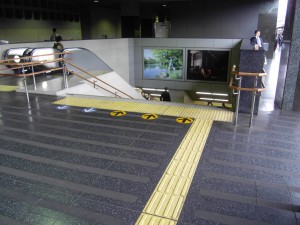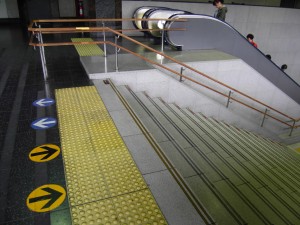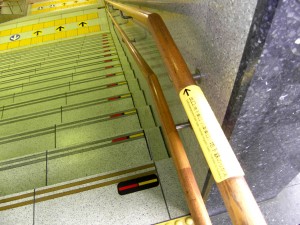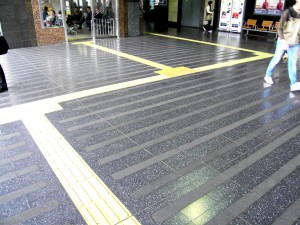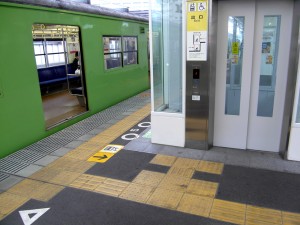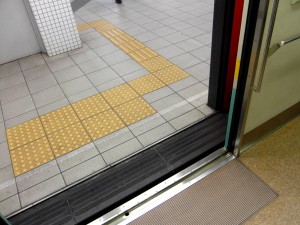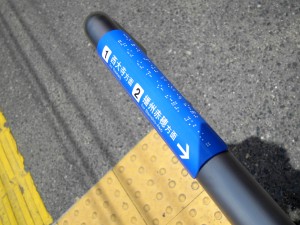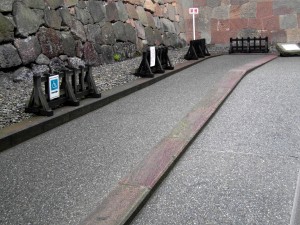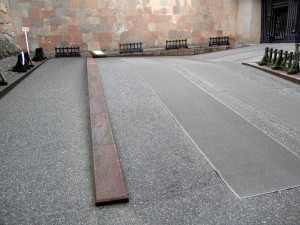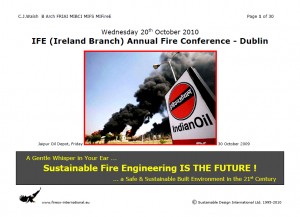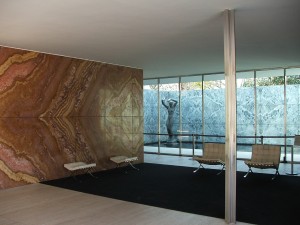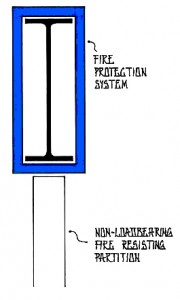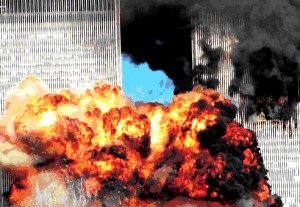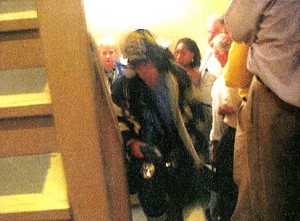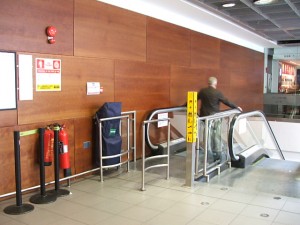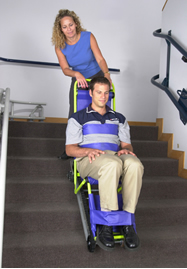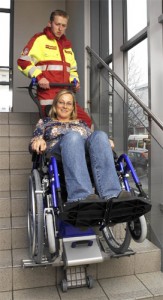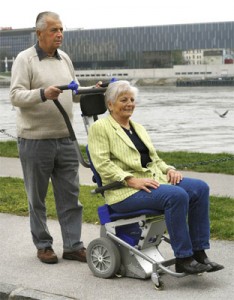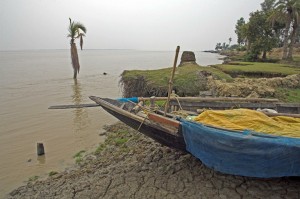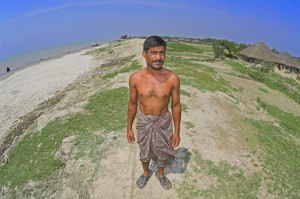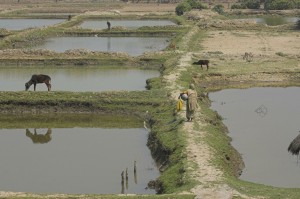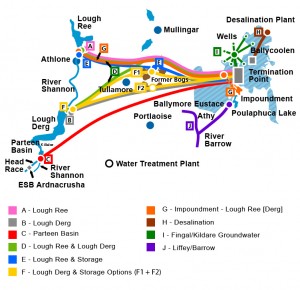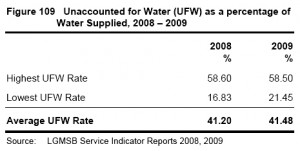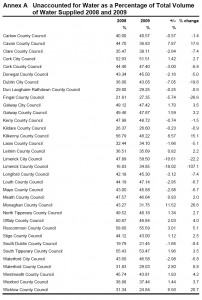2010-10-14 …
Our Ultimate Goal … as Human Beings … must be to arrive, as quickly as practicable, at a dynamic and harmonious balance between a Sustainable Human Environment and a flourishing, not just a surviving, Natural Environment … with the Overall Aim of achieving Social Wellbeing for All.
Note: Human Environment … Anywhere there is, or has been, an intrusion by a human being in the natural environment.
Note: Social Wellbeing … A general condition – in a community, society or culture – of health, creativity, responsible fulfilment, and sustainable development.
Simply stated … Biodiversity is Critical for the Good Health of the Natural Environment ! And yes … the Natural Environment is a Living System … and we must become comfortable when using such terms as ‘health’, ‘injury’ or ‘harm’ in relation to its condition. Or, should I say ‘her’ condition ??
Furthermore … a Flourishing Natural Environment is an essential foundation for Biodiversity within a Sustainable Built Environment.
Note: Built Environment … Anywhere there is, or has been, a man-made or wrought (worked) intervention by humans in the natural environment, e.g. cities, towns, villages, rural settlements, roads, bridges, tunnels, transport systems, service utilities, and cultivated lands, lakes, rivers, coasts, seas, etc. … including the virtual environment.
[A Short Digression: One important point needs immediate and unequivocal clarification … it is only in the context of Biodiversity within the Built Environment can there be any consideration or discussion about the Sustainable Use/Exploitation of that Biodiversity !]
.
Shamefully … as Human Beings … we have made a terrible, terrible mess of Our Planet. And it continues … and continues …
Initiated at the time of the Deepwater Horizon Offshore Drilling Rig Explosion and Fire, on 20th April 2010 … this summer’s BP Oil Spill in the Gulf of Mexico … an unprecedented Local Environmental, Social and Economic Tragedy and a Regional Disaster … unfolded very quickly and very prominently in front of our eyes. It was a long time, however, before the full nature and extent of this catastrophic incident was revealed.
Excluding the issues of Public Relations Spin, Withholding and/or Concealment of Vital Information, Individual Incompetence, and Lies … Institutional Failure (or, to put it another way, Lack of Institutional Capacity) alone … i.e. failure to properly anticipate, or to be adequately prepared, and/or to respond effectively and in a timely manner … added to, and magnified, the scale of this disaster.
.
On Wednesday, 14 July 2010, the following brief overview describes the United States Disaster Response … my sincere apologies for reproducing the quaint, but prehistoric, Imperial Units of Measure …
Disaster Response Vessels
- Vessels of Opportunity: 2,754
- Barges: more than 540
- Skimmers: more than 580
- Other Vessels: more than 3,000
- Total Active Response Vessels: more than 6,870
and
Boom Data
- Boom deployed: more than 3.27 million feet
- Boom available: more than 855,000 feet
- Total Boom: more than 4.12 million feet
Oil Recovered
- Oily Water Recovered: nearly 32.9 million gallons
- Amount Estimated Burned: nearly 10.97 million gallons
- Oil Captured (CAP) over last 24hrs: more than 539,000 gallons
Oil Dispersants
- Surface dispersant used: more than 1.07 million gallons
- Sub-sea dispersant used: more than 762,000 gallons
- Total Dispersant Used: more than 1.83 million gallons
Personnel Involved
- Overall Personnel Responding: more than 44,000 personnel
[Source … http://www.restorethegulf.gov/release/2010/07/15/operations-and-ongoing-response-july-15-2010]
.
United States National Commission on the BP Deepwater Horizon Oil Spill and Offshore Drilling
Staff Working Paper No.2 – 6 October 2010
Decision-Making within the Unified Command
Click the Link Above to read and/or download PDF File (276kb)
.
.
 IN EUROPE … during this International Year of Biodiversity … a Major and Widespread Regional Disaster is unfolding quietly, slowly … hidden from the view of the general European public … and in relation to which important lessons must be learned from the Gulf of Mexico Oil Disaster. Please examine closely that U.S. National Commission’s Staff Working Paper No.2 above.
IN EUROPE … during this International Year of Biodiversity … a Major and Widespread Regional Disaster is unfolding quietly, slowly … hidden from the view of the general European public … and in relation to which important lessons must be learned from the Gulf of Mexico Oil Disaster. Please examine closely that U.S. National Commission’s Staff Working Paper No.2 above.
On 4th October 2010 … the European Environment Agency (EEA) published Report No.5 : ‘Assessing Biodiversity in Europe’ … which clearly stated (in the final paragraph of the final chapter … and then, only when quoting from another document !) …
‘ a large proportion of European species and habitats are either facing extinction, have an unfavourable conservation status, or their status is unknown.’
.
THE QUESTION which must be asked is … whether there is yet proper … or even sufficient … Institutional Capacity at European Union and EU Member State levels to implement Any European Biodiversity Strategy … with the clearly specified target of protecting, conserving and nurturing Biological Diversity in Europe ???
.
Does the following cautiously worded text convince you ? Not me, I’m afraid !
EEA Technical Report No.5 / 2010 – Chapter 4 – ‘Conclusions, Way Forward & Knowledge Gaps’
European Biodiversity has declined dramatically in the last two centuries, with the conversion of natural habitats to meet growing demands for food, energy and infrastructure. Although the pace of change has varied across the region and has generally slowed considerably in the last couple of decades, agricultural land use now accounts for almost half of the European terrestrial area.
In coastal and marine areas, industrial fishery operations have had similarly large impacts, affecting both fish populations and habitats throughout European coastal and marine waters. Nearly half of assessed fish stocks in Europe fall outside safe biological limits. The majority of biodiversity in Europe now exists within a mosaic of heavily managed land and seascapes, and is to a large degree linked to agricultural, forestry and fishery practices across the continent.
In recent decades, growing awareness of biodiversity decline has led to improved commitments, policies and practices for the conservation and sustainable use of biodiversity throughout much of Europe. Biodiversity is now higher on the political agenda in Europe than ever before. Significant targeted responses have been made by public, civil society and private institutions to restore habitats, protect threatened species and reduce the main threats to biodiversity in Europe.
As a result of the policies adopted and implemented at international and European scales, including the Birds, Habitats, and Water Framework Directives, there are indications that some aspects of biodiversity are improving in status in parts of Europe. There have been significant increases in forest cover in the last two decades across northern Europe and the status of many waterways has improved across Europe as a result of reduced industrial and agricultural pollution in many countries. Recovery plans have been documented and are being implemented for many of Europe’s threatened species, with some successes.
While ambitious targets are being set in Europe to halt biodiversity loss and some progress is being made, many threats remain and new ones are growing. This erodes the ability of ecosystems to provide services to people in Europe and beyond.
Threats to Europe’s biodiversity include habitat loss and degradation, unsustainable harvesting, establishment and spread of invasive alien species, pollution from agricultural runoff in many countries, unsustainable forest and agriculture management, increasing water abstraction and use, and increasing climatic change impacts, especially in southern and northern Europe, and in mountainous areas across the region. The loss of wetland and dryland habitats also continues.
Future Progress in addressing these threats and conserving Europe’s Remaining Biodiversity will depend on success in Four Key Areas:
1. Enhanced Implementation Of Measures Targeted At Biodiversity Conservation. There has been progress in protecting and restoring threatened species and habitats across much of Europe, and protected areas and sustainable farmland and forestry management practices have grown steadily. However, there remains considerable opportunity to scale up such practices across the region, including coastal and marine areas. Such direct efforts for biodiversity conservation are a cornerstone of conservation. They are essential to manage the most important threats and conserve the most threatened biodiversity. However, alone they are insufficient to address biodiversity loss in the medium and long term because many of the direct drivers, and all of the indirect drivers of biodiversity loss, emanate from other sectors.
2. Policy Coherence On Biodiversity Is Required With Other Sectors. In order to conserve and sustainably use biodiversity, policies in other sectors that have an impact on or depend on biodiversity need to be supportive. These include those on trade, agriculture, fisheries, planning, transport, health, tourism, and the financial sector, including insurance. In many EU countries, considerable funding for managing biodiversity in landscapes is obtained from the Common Agricultural Policy (CAP). Mainstreaming biodiversity into these areas – in both the public and private sectors – is essential for an integrated approach to biodiversity conservation. Successful mainstreaming will require all sectors to recognise the value of biodiversity. Recent efforts to ascribe accurate economic values to biodiversity and ecosystem services, for example ‘The Economics of Ecosystems and Biodiversity’ (TEEB, 2010), provide a basis for mainstreaming.
3. A More Integrated Approach Across Sectors And Administrative Boundaries, At Landscape And Seascape Scales. This entails applying the ecosystem approach more widely, and requires co-operation across sectors for successful implementation. The present report shows that management of some habitat types, such as forestry and freshwater systems, is already starting to apply such approaches. Others, such as marine habitats, mountains and agricultural land, have not yet been adjusted sufficiently. Integrating protected areas, ecological networks, connectivity areas, production and urban landscapes into multifunctional land-use planning at a regional scale will be an essential element of a successful European conservation strategy. Likewise at watershed and landscape scales, the integration of biodiversity and natural resources management, including that of water, will require dialogue and agreement between the multiple stakeholders using, depending on, and managing such resources.
4. Public Awareness Of The Relevance Of Biodiversity To The Lives Of European Citizens, And The Consequences Of Biodiversity Loss At Local, European And Global Scales, Needs To Be Raised. Significant efforts are therefore required on communication, education and public awareness, to complement the policy framework and to encourage both individual action for biodiversity conservation, and a supportive public opinion for changes in policy and practice.
This report shows that, particularly regarding forest habitats, public awareness of the value of sustainable practices and recycling is increasing. This can be enhanced by publicising how more sustainable practices can benefit both society and the ecosystems themselves.
Despite being the region with the longest and broadest biodiversity knowledge base, key knowledge gaps remain across Europe. Filling such gaps would support action and policies across the four key areas.
Knowledge gaps exist in individual elements of biodiversity. Little is known, for example, about many aquatic systems (and especially floodplains and deltas), genetic diversity beyond the agricultural sector, and for many taxa at the species level. Considerable further work is required to assess the status of plants, invertebrates and fungi, and to assess trends in species status. A global base of species level assessments (or ‘Barometer of Life’) would cost some €45 million (Euros), according to recent estimates (Stuart et al., 2010).
My Note: Taxon (plural Taxa) … Any unit used in the science of Biological Classification, or Taxonomy. Taxa are arranged in a hierarchy from kingdom to sub-species, a given taxon ordinarily including several taxa of lower rank. In the classification of protists, plants and animals, certain taxonomic categories are universally recognized; in descending order, these are kingdom, phylum (in plants, division), class, order, family, genus, species, and sub-species, or race.
In addition to knowledge of specific elements of biodiversity, interdisciplinary knowledge gaps are particularly apparent, with little in the way of accumulated knowledge on the interlinkages between biodiversity, ecosystem services and human wellbeing. Recent efforts to link biodiversity science with economics have been particularly promising but further interdisciplinary research and assessment would support strengthened decision-making and policymaking processes on European biodiversity in the 21st century.
Key Gaps in Knowledge that emerge from this report are as follows …
- Data Availability: Data beyond EU-27 Member States are often limited, especially European-level information on biodiversity (species, communities and genetic stock). Generally, data for marine species and habitats are much scarcer than for terrestrial ecosystems, and across Europe some important ecosystem types (e.g. marine and coastal) are among the least studied. Data are often lacking at relevant scales, e.g. for key environmental drivers or habitat change. This information would help set solid and relevant targets and continually improve sustainable management schemes.
- Climate Change Adaptation Strategies: Information on adaptation measures and strategies is often insufficient for many European ecosystems to counteract adverse climate change impacts and maintain ecosystem goods and services (e.g. FAO, 2009). While climate change considerations have largely driven the debate on adaptive capacity and vulnerability, there is now increased recognition of the multidimensional nature of drivers of change, responses and feedback mechanisms (e.g. CDE, 2009).
- Ecosystem Services: Enhanced information on environmental, economic and social benefits of the ecosystem services supplied by biodiversity is lacking to inform sustainable management of ecosystems and raise public awareness of biodiversity’s value and the link to livelihoods. The value of non-marketed goods and services are an important element in this.
- Optimal Land-Use Strategies: It is important to finding the optimal mix of protected and productive areas, whether used for intensive agriculture or biomass for energy. More detailed data and analysis are needed to assess the extent and consequences of losing natural habitats through land conversion for increased biomass, e.g. biofuel feedstock production (FAO, 2008). Ecosystem approaches are also particularly well suited for addressing competing land-use issues in a systematic and holistic framework, even in the absence of economic valuations, and they have considerable potential as an integrated management tool (Hicks et al., 2008).
- Sustainable Management Indicators: More knowledge on sustainable management indicators is required along the lines of the pan-European indicators of sustainable forest management.
- Green Infrastructure: More information is required on the potential benefits of a green infrastructure approach to facilitate land development and land conservation together in a way that is consistent with existing natural features to deliver multiple benefits to people and biodiversity.
Recognising the urgent need to address these issues and reverse the trends of biodiversity loss and ecosystem degradation, the Environment Council adopted the 2020 Headline Target on 15 March 2010 and the European Council endorsed the Long-Term Biodiversity Vision on 26 March 2010. These ambitious initiatives will underpin the new EU Biodiversity Strategy to be finalised by the end of 2010. In its conclusions, the European Council specified that the strategy to address biodiversity loss and ecosystem degradation should set a clear baseline outlining the criteria against which achievements are to be assessed.
EEA developed the EU 2010 Biodiversity Baseline (EEA, 2010) to respond to this need. It offers a comprehensive snapshot of the current state of biodiversity. It thereby supports the EU in developing the post 2010 sub-targets as part of the biodiversity strategy and provides factual data for measuring and monitoring progress in the EU from 2011 to 2020. This new information tool demonstrates that a large proportion of European species and habitats are either facing extinction, have an unfavourable conservation status or their status is unknown. It highlights the urgent need for conservation actions and intensified efforts.
.
In Ireland … am I convinced that the New National Biodiversity Plan 2010-2015 (draft for public consultation, dated 1st September 2010) will turn out to be anything more than just another slick looking public relations document issued by our one and only Department of the Environment, Heritage & Local Government (DEHLG) ? I’ll give you one guess what my answer is !!!
.
.
END
